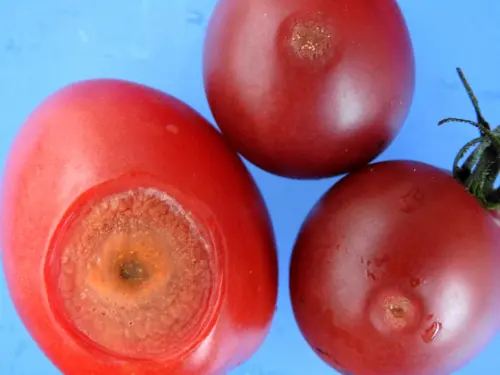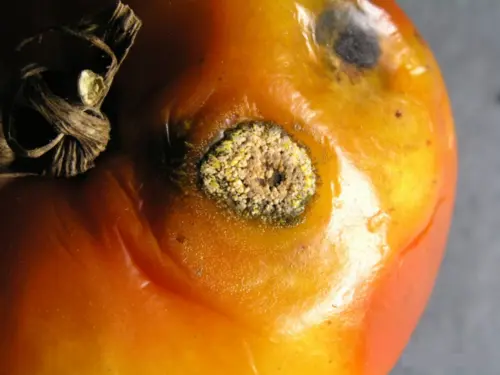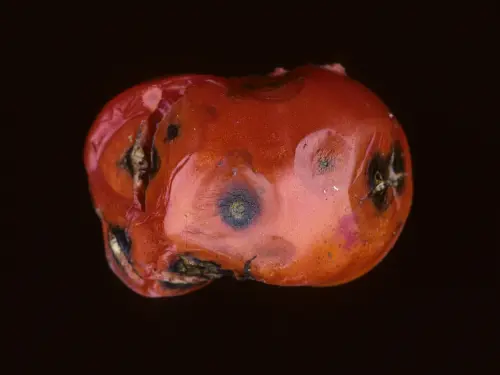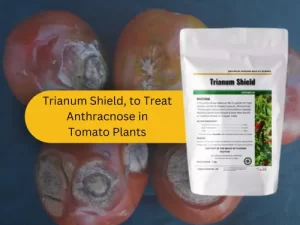Food plants often get dumped by various pests and bacteria, and sometimes it’s really tough to unveil and cure these problems such as anthracnose tomato.

Tomato Anthracnose is a fungal ailment that negatively affects the plant material and causes greyish, round spots that result in rotting fruit. Effective control means good soil drainage, crop rotation, training by trellising systems and using copper-based anthracnose fungicides where necessary.
In this article, we will look into what anthracnose is about, how it develops, and the preventive and management measures based on the case of the tomato plant.
Anthracnose tomato will be the brown rot disease caused by different species of the Colletotrichum genus fungi, e.g. Colletotrichum phomoides and C. coccodes. This fungus is capable of “an overwintering” in plant debris and seeds, getting so difficult to eradicate. It’s that fungus that love warm and moist areas that have temperatures of about 80 degrees Fahrenheit or above. Rain drenches and irrigation floodings are usually the main source of spread, which increases the chance of infection in healthy plants.

The disease most evident is a presentation of tiny, round indentations that look like water soaked. Mode of appearance of this spots may be both on ripe and green tomatoes.
Over time, they worsen and become enlarged and deeper like hollowed out holes. As they age they convert into very dark (it means that the fungi have been active too long).
In time, the unhealthy patch spreads, gets brown wholegrow, and finally collapses. Eventually, it will diminish the fruit quality, rendering it inedible thus, it poses a threat both to the commercial growers and the home gardeners.
Anthracnose is highly contagious; just a few spores can spread it through touching or even water spraying. Handling infected fruit can transfer spores to adjacent plants or other crops, similar to moving around infected fruit.

The pathogens of anthracnose organisms commonly persist over winter in old dead leaves. This means that the disease just hides, beneath the surface, even if the symptoms disappear. Yet, the disease is ready to reemerge in the next planting season.
Rain or poor watering can carry the waterborne fungal spores thus sparked by splashes. This might increase the spread of the infection among plants, and just the opposite will happen – increase the level of damage caused by the disease.
Cultural practices, anthracnose fungicides and other preventive measures may be applied as anthracnose prevention. undefined

Trianum Shield, the best fungicide for anthracnose, consists of a Trichoderma formula traditionally residing in the root zone of plants, which adds up their capacity to deal with stress factors and harmful fungi. Its working principles are based on the strategy of competing for nutrients and space and, therefore, limiting pathogen growth and plant disease. You can apply it as a soil drench or foliar spray to improve the comfort of application methods.
Besides, Trichoderma Harzianum as anthracnose organic treatment,which is a multifaceted fungicide specially designed to cater to different fungal pathogens. This is the main principle of its action. It creates conditions that develop the disease, produces antifungal substances, inhibits pathogen growth, and stimulates plant defenses. It serves as both a preventative treatment and a natural alternative to chemical fungicides for existing infections.
Both products are ecological and can also be integrated into integrated pest management (IPM) strategies. They are suitable for organic and sustainable farming. When used appropriately, these products can reduce the severity of anthracnose on tomato crops, leading to healthier plants.
Preventive measures and proper management methods mentioned above will greatly decrease anthracnose on your tomato plant, ensuring a healthier harvest.
As a plantation owner, I face quite a few..
The banana weevil, also known as Cosmopolites sordidus, is..
Fusarium wilt in banana is usually known to be..

Leave a Reply